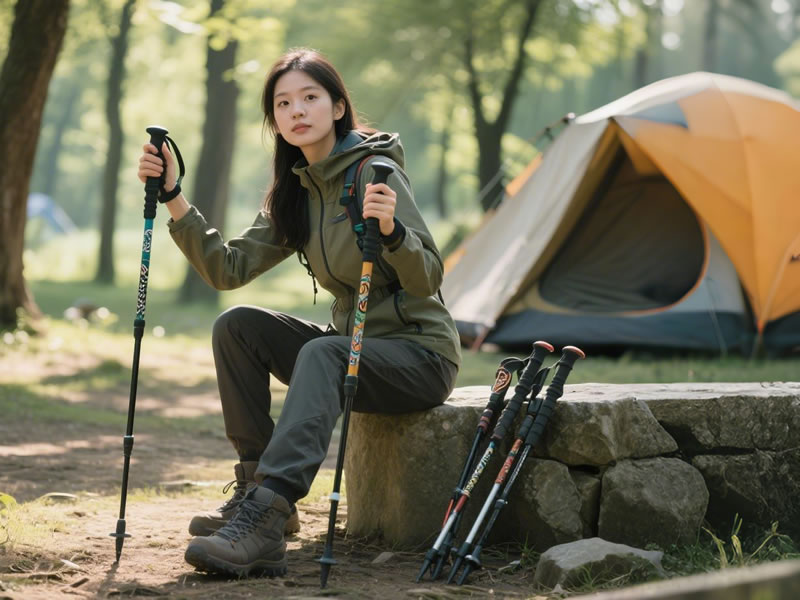What’s the difference between trekking poles and hiking sticks?
When venturing into the outdoors, you'll notice hikers using different types of support systems - from high-tech adjustable poles to simple wooden staffs. Understanding the key differences between trekking poles and hiking sticks will help you choose the right tool for your adventures.

The Fundamental Differences
Trekking Poles (Modern Performance Gear)
- Technical construction: Lightweight aluminum or carbon fiber
- Adjustable length: Telescoping or folding mechanisms
- Sold in pairs: Designed for bilateral support
- Specialized features: Shock absorption, ergonomic grips, interchangeable tips
- Weight: Typically 8-16oz per pole
- Price range: 40-40−200 for quality pairs
Hiking Sticks (Traditional Support)
- Natural materials: Usually made of wood
- Fixed length: One-size design (often customized to user height)
- Single unit: Meant to be used alone
- Basic functionality: Simple grip, no adjustability
- Weight: Often heavier (1-2lbs)
- Price range: 20-20−80 for quality sticks
Performance Comparison
Trekking Poles Excel For:
✓ Steep or technical terrain
✓ Long-distance hiking
✓ Joint protection
✓ Fast-paced hiking
✓ Weight distribution with heavy packs
Hiking Sticks Shine For:
✓ Casual nature walks
✓ Traditional hiking experience
✓ Simple river crossings
✓ Basic trail support
✓ Photogenic adventures
Key Feature Breakdown
- Adjustability:Poles: Multiple length settings for uphill/downhillSticks: Fixed length (may be cut to size)
- Grip Comfort:Poles: Contoured, moisture-wicking materialsSticks: Basic rounded handles (may cause blisters)
- Shock Absorption:Poles: Often include spring mechanismsSticks: None (all impact goes to arms)
- Trail Impact:Poles: Rubber tips minimize environmental damageSticks: Metal tips can be harder on trails
- Storage/Transport:Poles: Collapse for easy packingSticks: Full-length always
Who Should Choose Which?
Best For Trekking Poles:
• Thru-hikers and backpackers
• Those with joint concerns
• Hikers covering varied terrain
• Anyone prioritizing performance
• Winter/off-trail adventurers
Best For Hiking Sticks:
• Casual day hikers
• Traditionalists who enjoy the aesthetic
• Those who prefer simplicity
• Walkers on established trails
• Photographers wanting natural look
Hybrid Options
Some modern solutions blend both concepts:
- Adjustable wooden poles
- Carbon fiber staffs with traditional styling
- Convertible systems (one pole becomes staff)
Maintenance Differences
Trekking Poles Need:
• Regular joint lubrication
• Tip replacement
• Strap adjustments
• Collapse mechanism care
Hiking Sticks Require:
• Occasional sanding
• Wood treatment
• Tip maintenance
• Basic cleaning
The Verdict
While both serve the fundamental purpose of trail support, trekking poles offer superior technical performance for serious hikers, while hiking sticks provide simplicity and tradition for casual outings. Your choice should depend on hiking frequency, terrain difficulty, and personal preferences.
Pro Tip: Try borrowing both before purchasing to see which feels more natural for your hiking style!
#HikingGear #TrailEssentials #TrekkingTips #OutdoorEquipment






